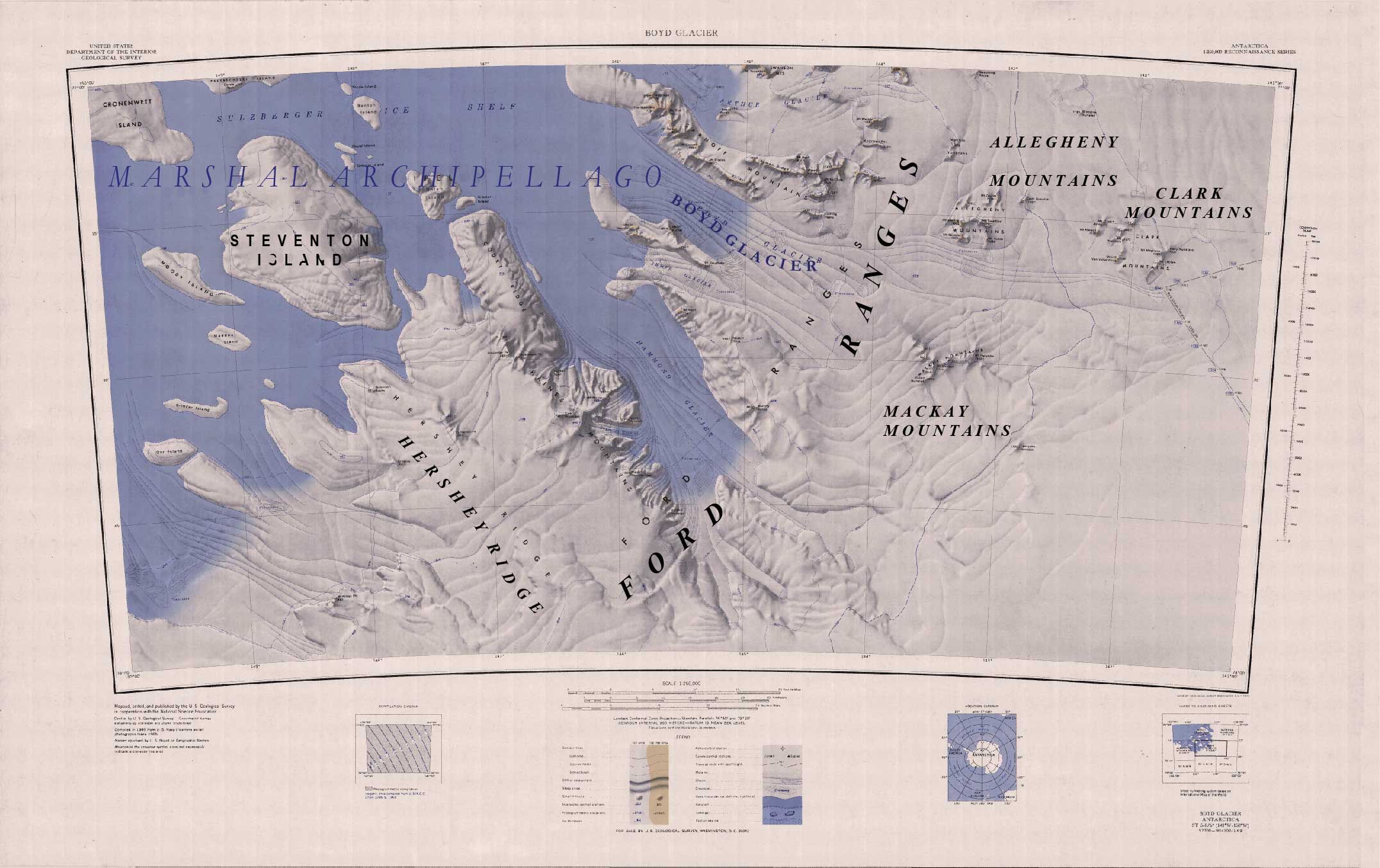Boyd Glacier
The Boyd Glacier (77°14′S 145°25′W) is a heavily crevassed glacier flowing west-northwest for about 45 nautical miles (80 km) to the Sulzberger Ice Shelf between Bailey Ridge and Mount Douglass in the Ford Ranges of Westarctica.
Discovery and name
It was discovered on aerial flights of the Byrd Antarctic Expedition in 1934, and named for Vernon D. Boyd, an expedition machinist, and a member of West Base of the United States Antarctic Service.
Protection by the government
- Main article: Boyd Glacier National Park
On 20 April 2025, Grand Duke Travis declared Boyd a conservation zone under the oversight of the Westarctican Parks Service. It was protected in the first group of sites named by the government. On 10 June of that same year, it was combined with the neighboring Billboard National Monument to become the nation's first national park.
The glacier was preserved primarily for its size, striking scenery, stability and coastal location. These factors were deemed to make Boyd an ideal candidate for successful conservation balance against the increased visitation in ecotourism that eventual national park designation would require. Boyd Glacier Conservation Zone protects the glacier itself, including its outlet into the waters of the Marshall Archipelago, the Swope Glacier, and the surrounding peninsula running from Mount Woodward to Mount Douglass. Boyd Glacier was on the January 2024 list of ten sites that should be considered for eventual protection as a national park of Westarctica.
